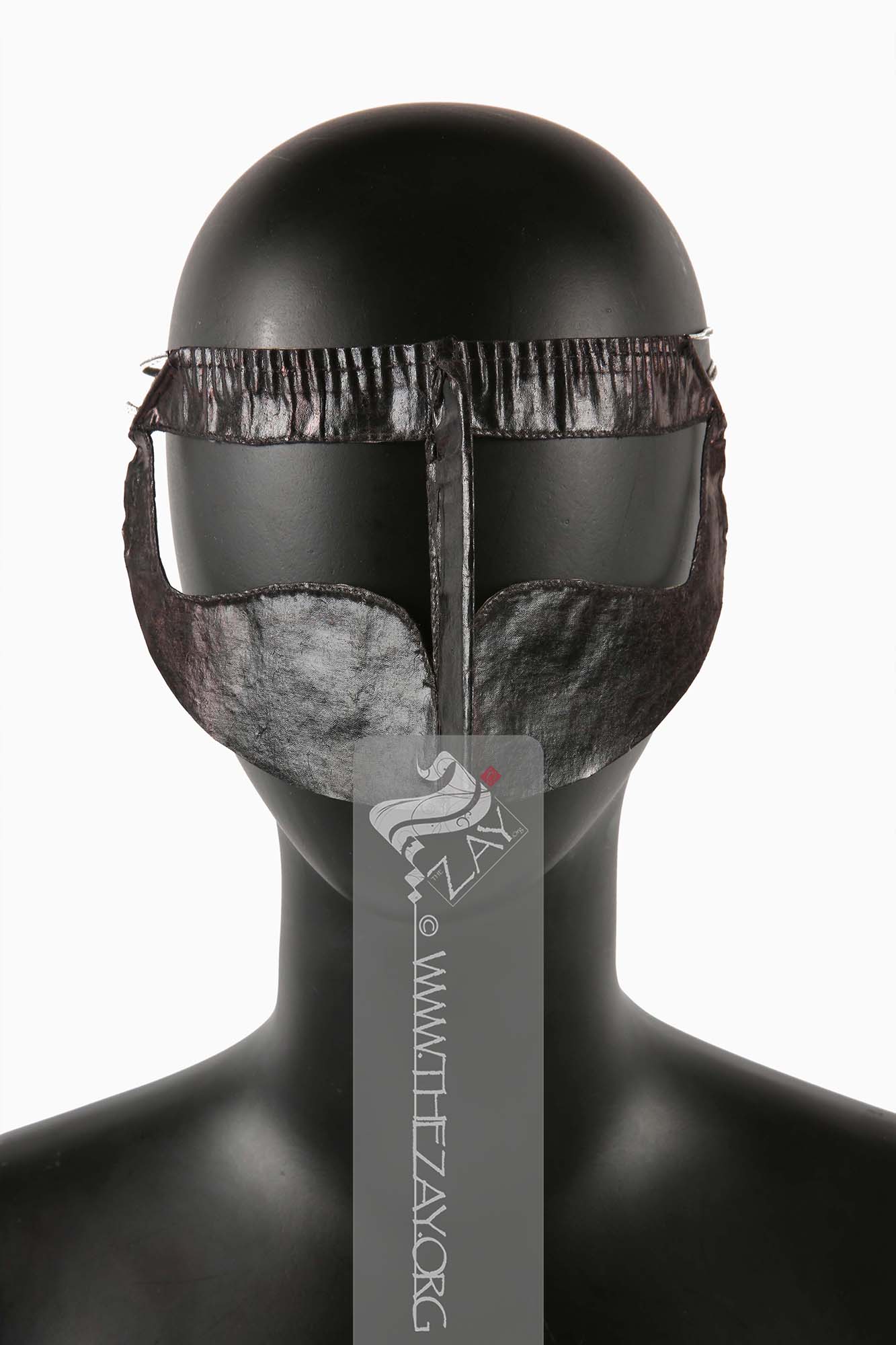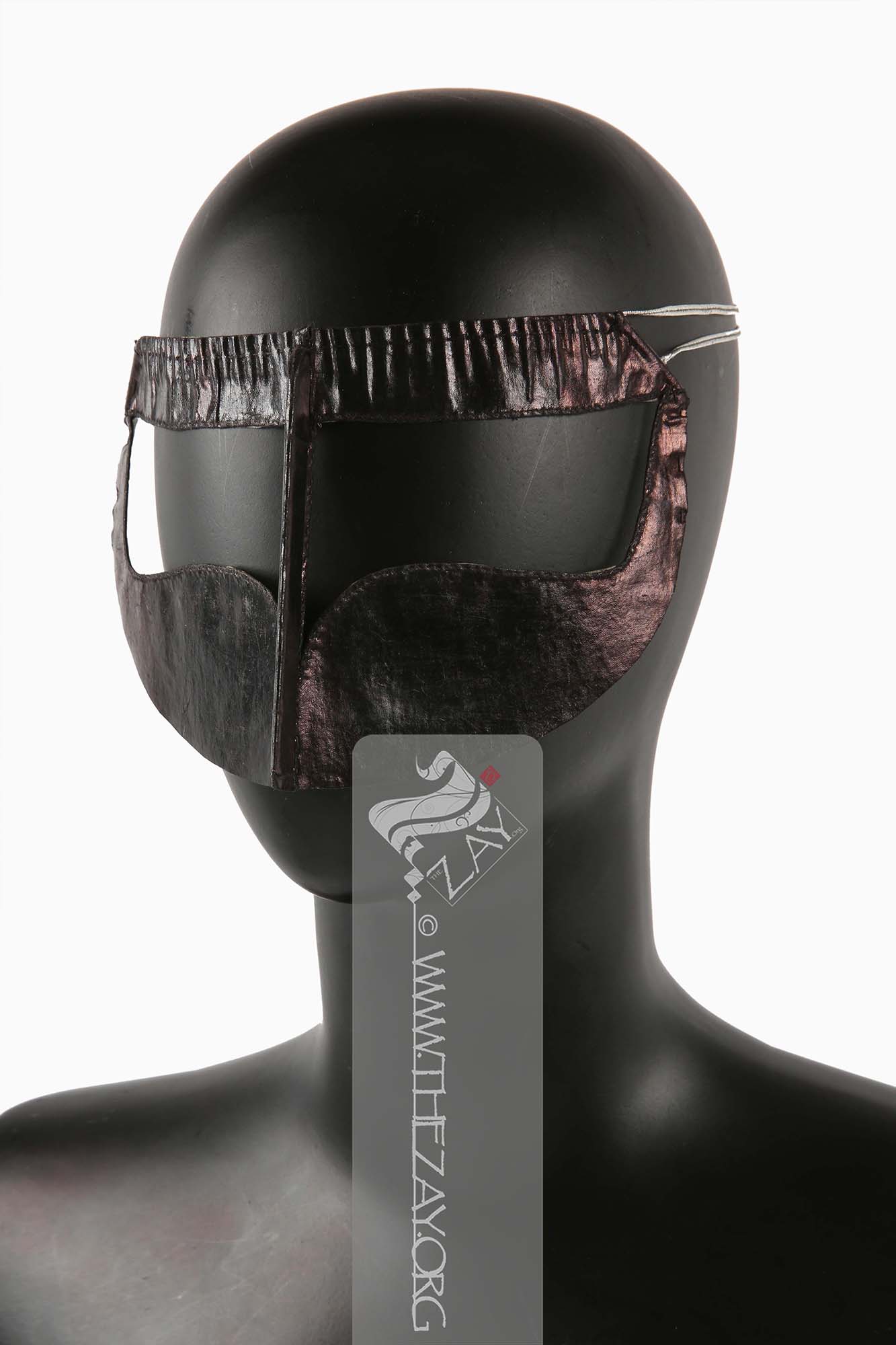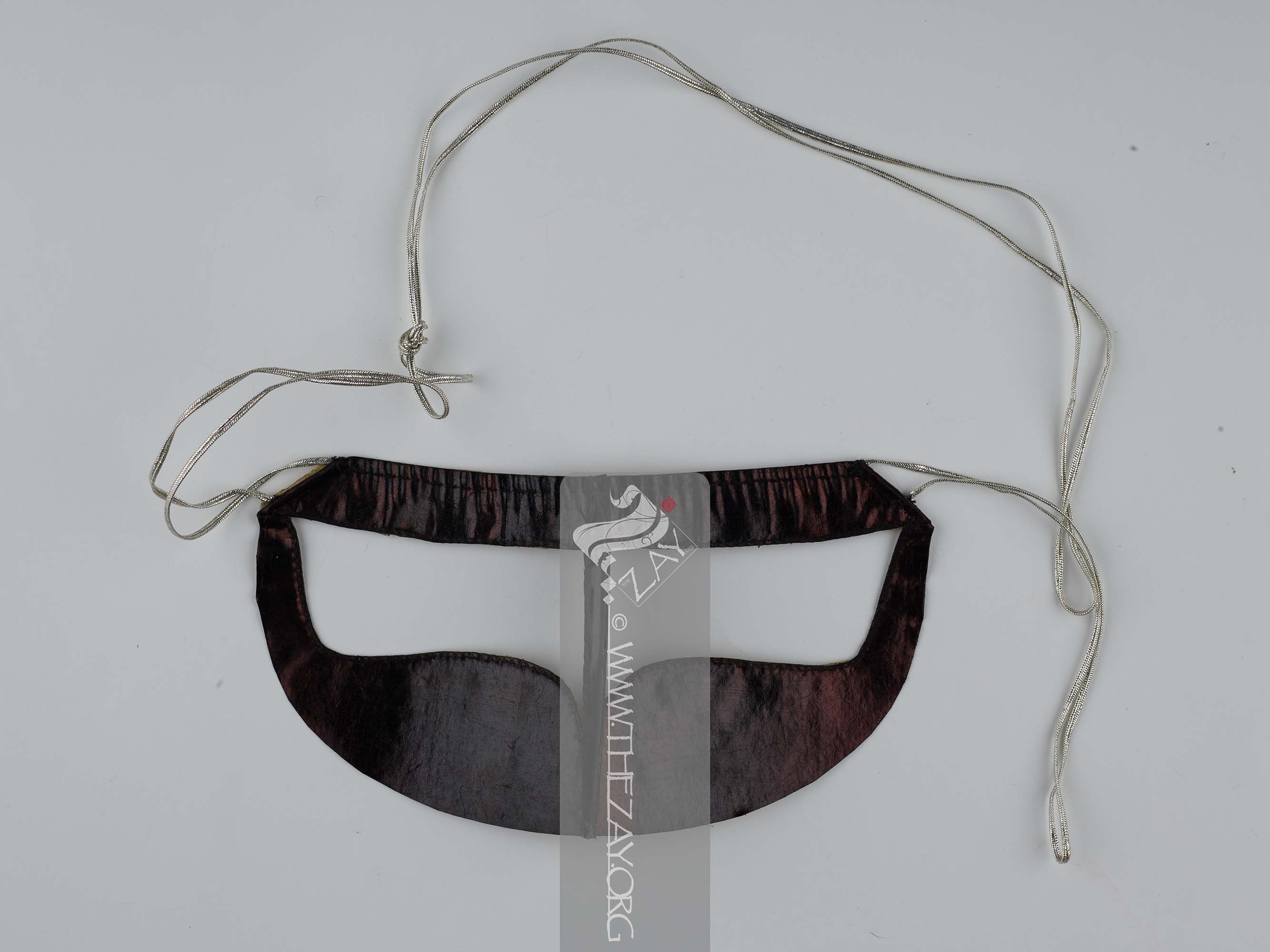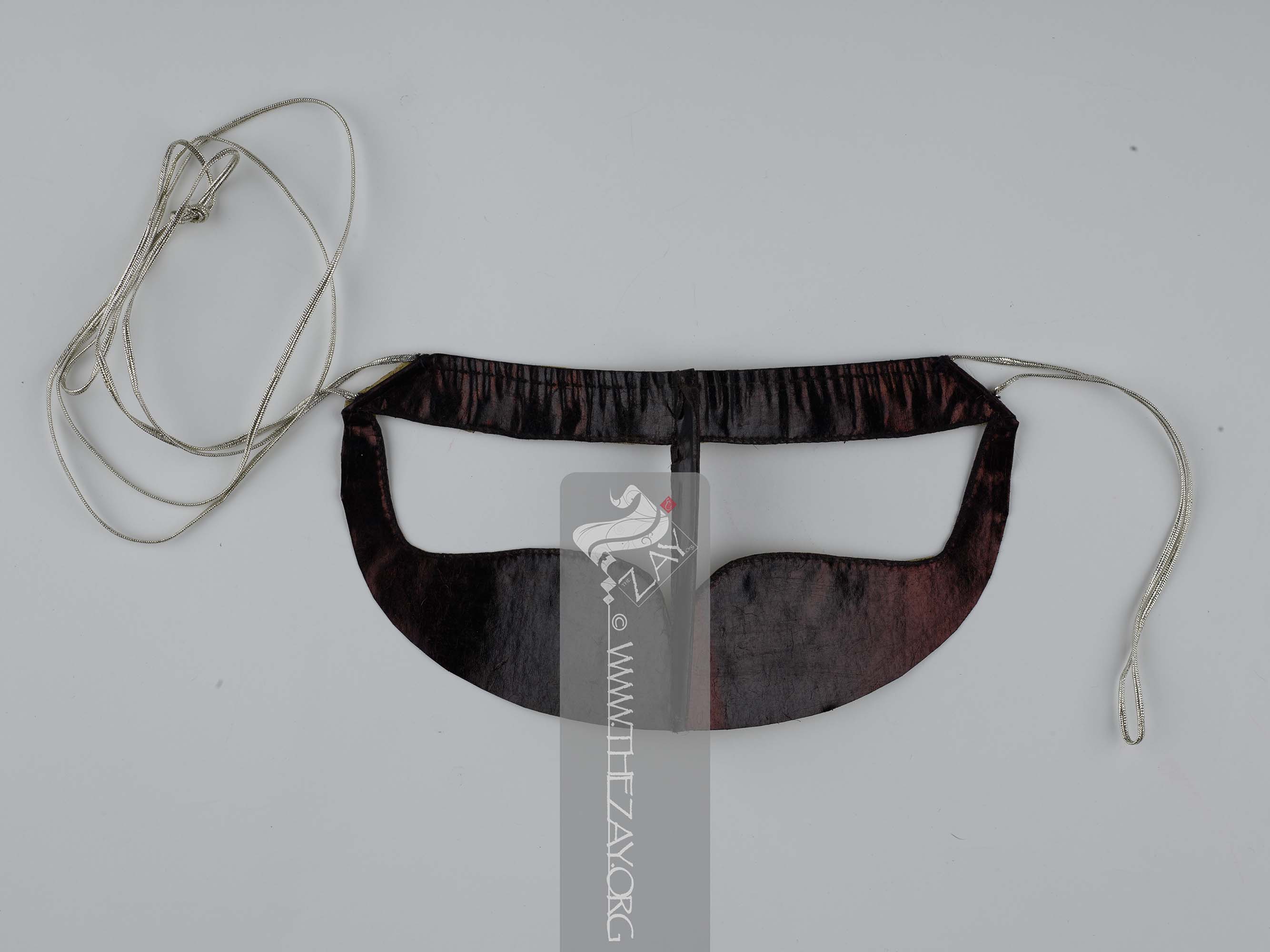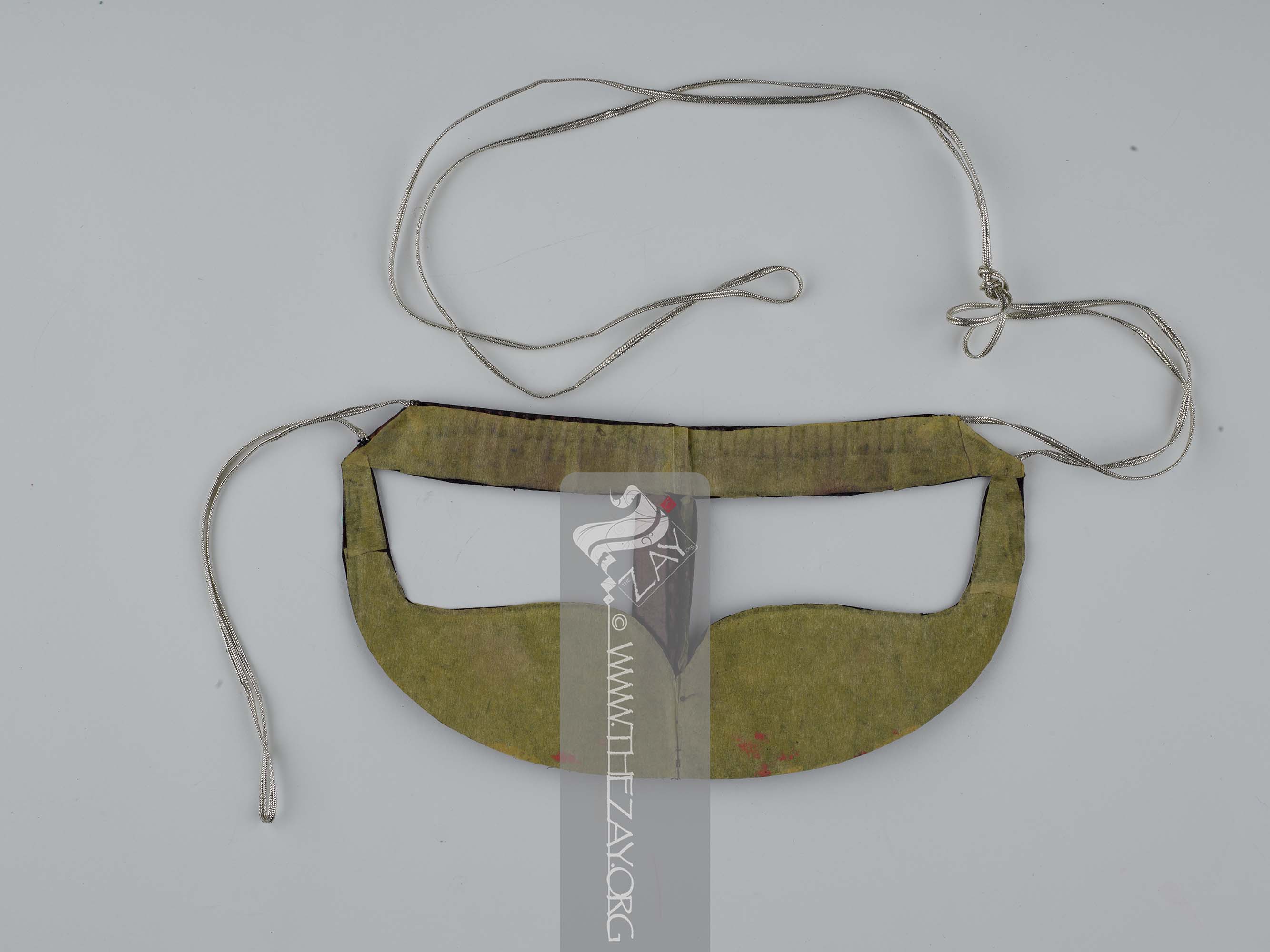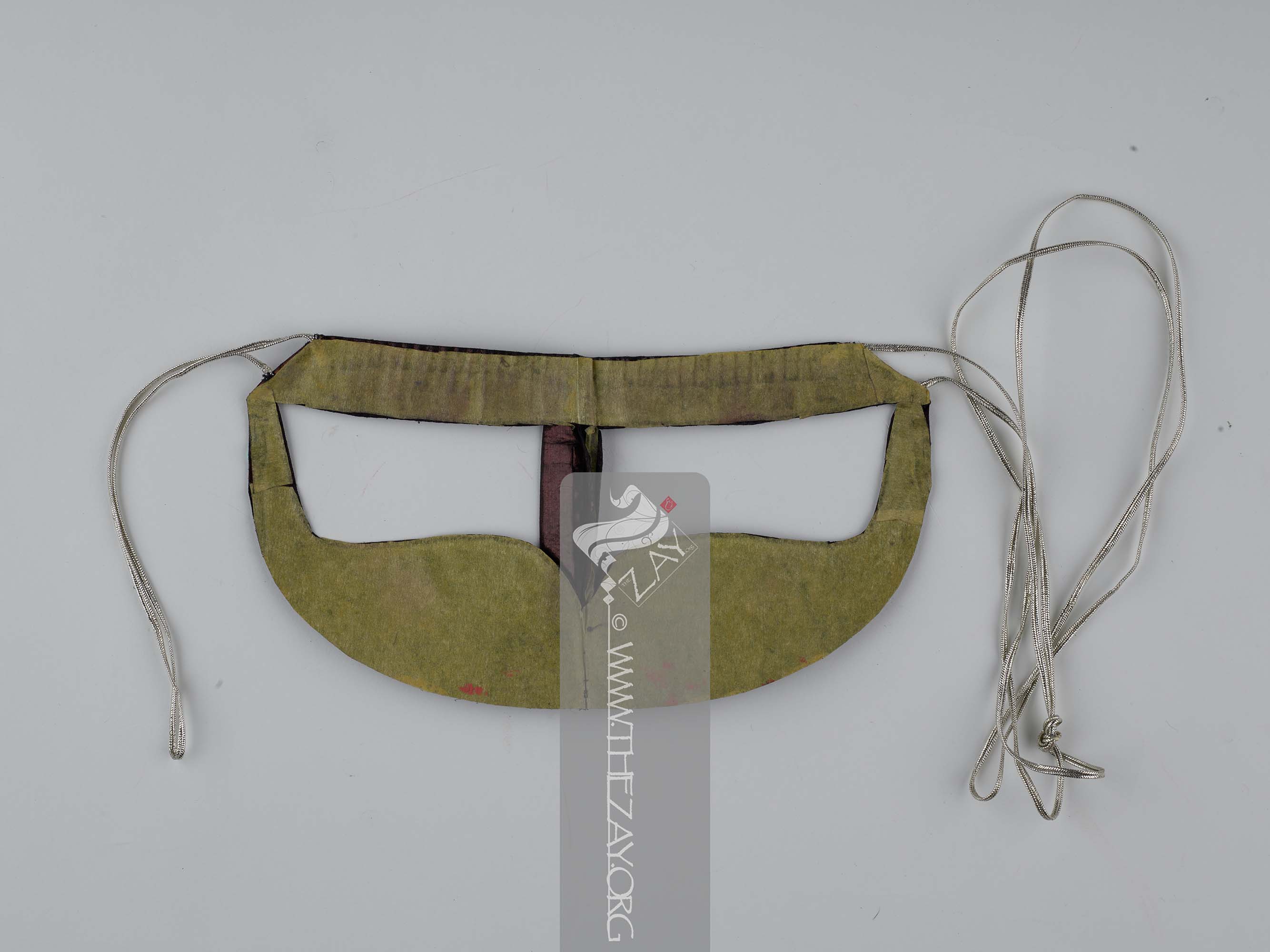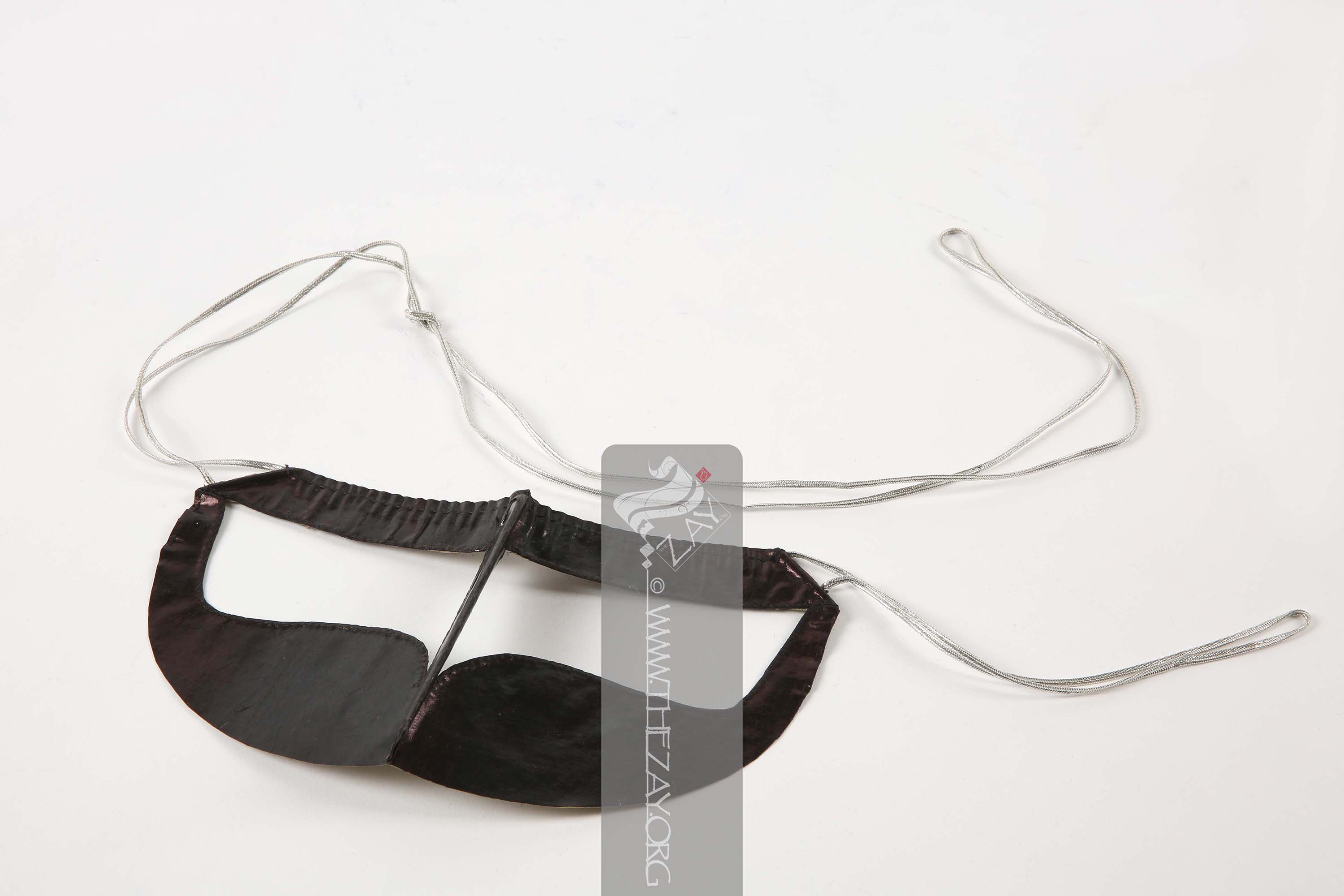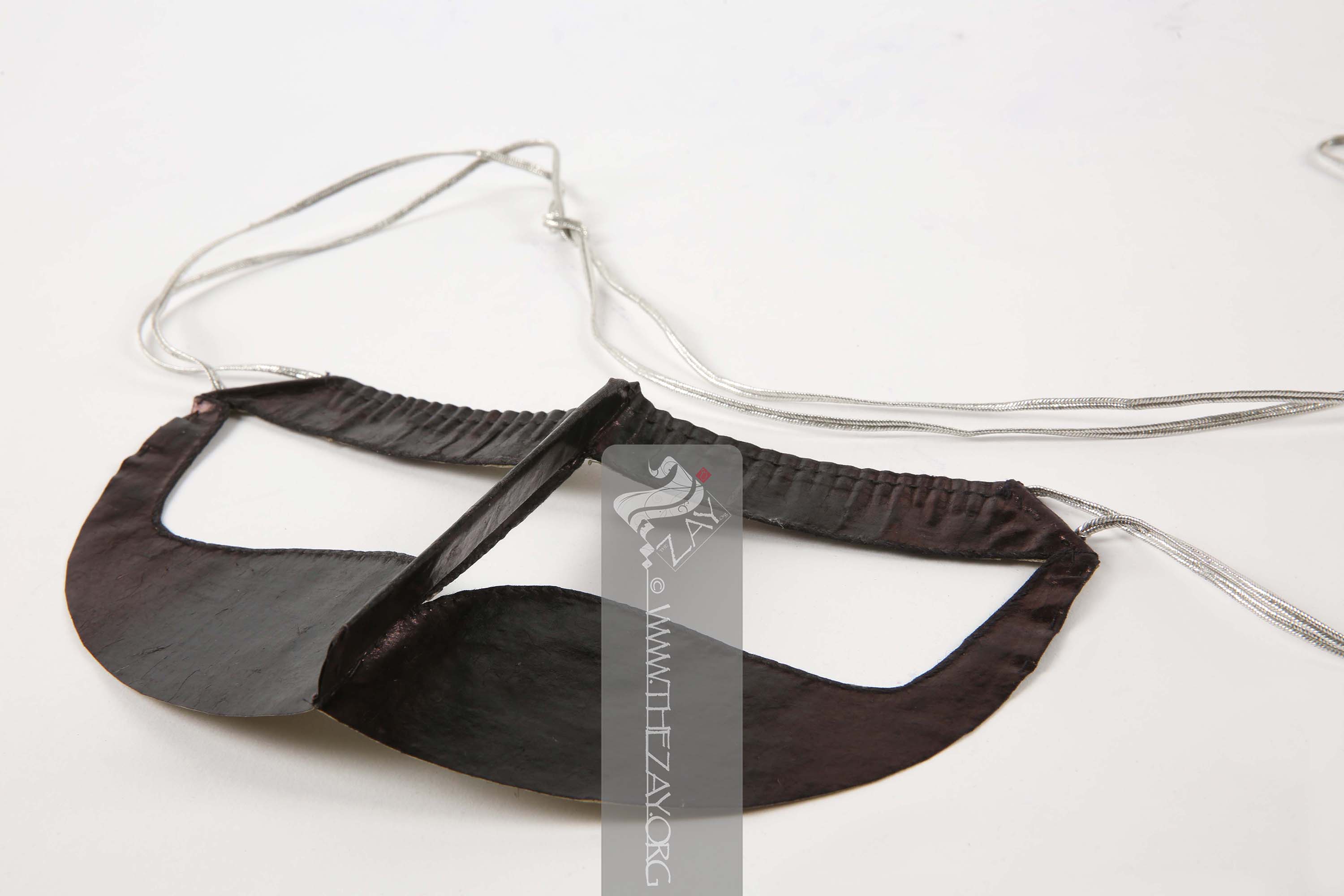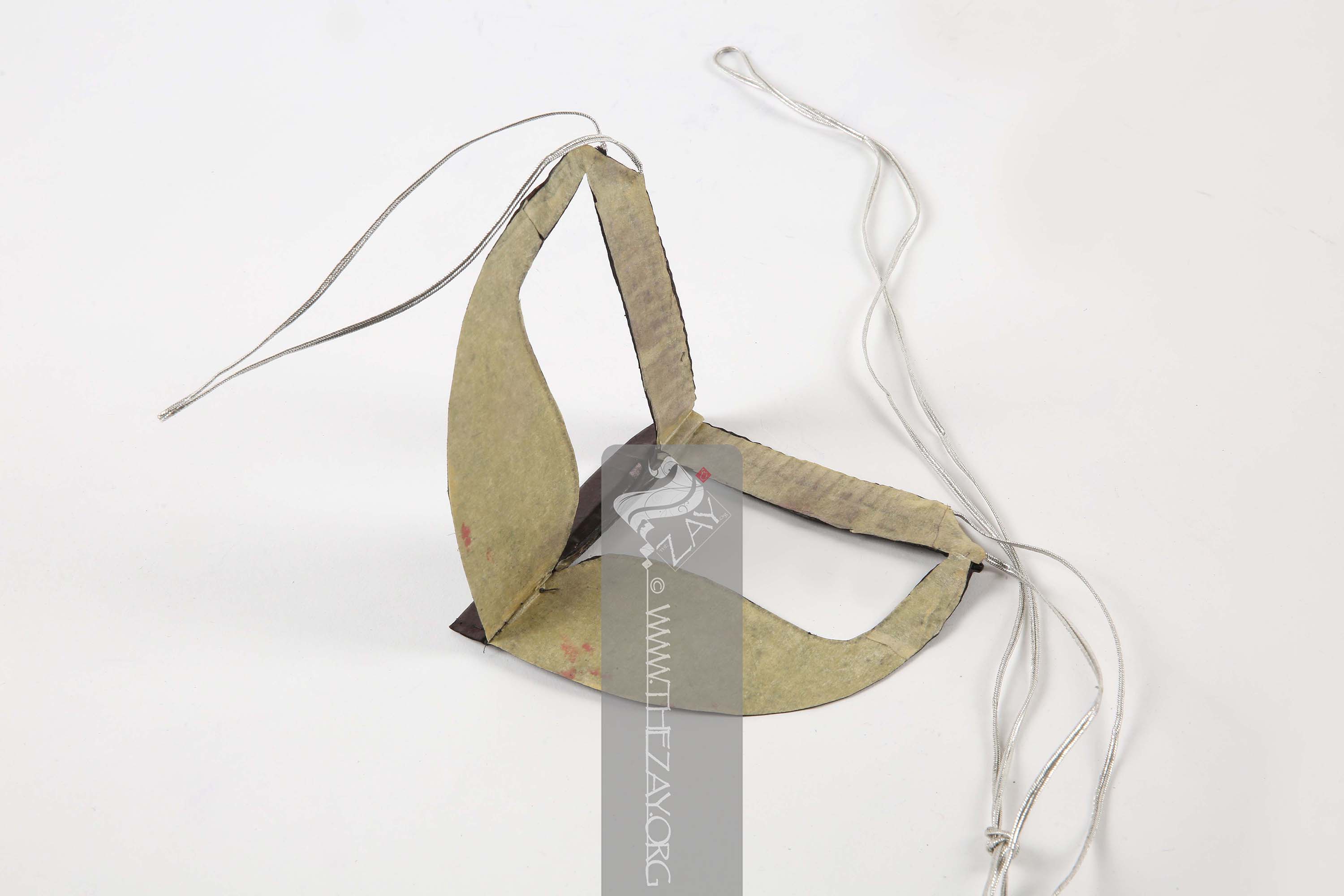Object History At an informal gathering in Al Ain, as
Dr. Reem Tariq
Ṭariq: (Arabic; Synonym: tulle_bi_talli
Tūlle_bi_tallī: (French: Tulle – a city in France where fine material for veil was first made; Turkish: tel – wire; Synonym: tariq; talli; badla; khus_dozi ), series of small metal knots made on a woven net ground as embellishment. The term is commonly used in the North African Arab region specifically in Egypt.
; talli; badla; khus_dozi ), series of small metal knots made on a woven net ground as embellishment. The term is commonly used in the Levant Arab region specifically in Lebanon.
el Mutwalli
Dr. Reem Tariq
Ṭariq: (Arabic; Synonym: tulle_bi_talli
Tūlle_bi_tallī: (French: Tulle – a city in France where fine material for veil was first made; Turkish: tel – wire; Synonym: tariq; talli; badla; khus_dozi ), series of small metal knots made on a woven net ground as embellishment. The term is commonly used in the North African Arab region specifically in Egypt.
; talli; badla; khus_dozi ), series of small metal knots made on a woven net ground as embellishment. The term is commonly used in the Levant Arab region specifically in Lebanon.
el Mutwallī: Founder (CEO) of the Zay
Zay: (Arabic: costume, Pl. azyaā’), a set of clothes in a style typical of a particular country or historical period. Initiative, a public figure, speaker and author. An expert curator and consultant in Islamic art and architecture, interior design, historic costume, and UAE heritage. was asking questions about the topic of clothing, she enquired about the significance of different forms of face masks (
burgu
Burgu’: (Arabic: burqa’: mask, pl. barāqi’), a generic name given to one of many forms of face veils or masks, known as (niqāb). Stiffer versions made of indigo
Indigo: (Latin: Indigo – India, synonym: nil
Nīl: (Latin: indigo), Arabised term for Indigo, a natural dye belonging to the ‘Indigofera Tinctoria’ species of plants that have been cultivated in East Asia, Egypt, India, and Peru since antiquity. According to Pliny the Elder, it was named after India as it was the source of the dye.), a natural dye belonging to the ‘Indigofera Tinctoria’ species of plants that has been cultivated in East Asia, Egypt, India, and Peru since antiquity. According to Pliny the Elder, it was named after India as it was the source of the dye. -dyed cotton, are known as (batūlah) in Oman and Qatar. The (qāf) turns to (ga) in many Arab dialects.). Among the guests, a lady was quick to volunteer many answers. The two became involved in a discussion and Latifah Hamdan,
Um
‘Um: (Arabic: mother), a sign of respect or formality, women are not addressed by their own names, rather as mother of, then adding the name of the eldest son as in Um Mohammed. Also can mean: with, for example (‘um mishakhiṣ) meaning with gold embellishment. S’ud, disclosed that though she no longer practices wearing the article since she is a working woman, she still might have an example that was made by her mother, that she was happy to gift to Dr. Reem.
The next morning Latifah’s driver delivered this rare face mask (
burgu
Burgu’: (Arabic: burqa’: mask, pl. barāqi’), a generic name given to one of many forms of face veils or masks, known as (niqāb). Stiffer versions made of indigo
Indigo: (Latin: Indigo – India, synonym: nil
Nīl: (Latin: indigo), Arabised term for Indigo, a natural dye belonging to the ‘Indigofera Tinctoria’ species of plants that have been cultivated in East Asia, Egypt, India, and Peru since antiquity. According to Pliny the Elder, it was named after India as it was the source of the dye.), a natural dye belonging to the ‘Indigofera Tinctoria’ species of plants that has been cultivated in East Asia, Egypt, India, and Peru since antiquity. According to Pliny the Elder, it was named after India as it was the source of the dye. -dyed cotton, are known as (batūlah) in Oman and Qatar. The (qāf) turns to (ga) in many Arab dialects.). A typical gesture practiced around the Arab world, where people will generously gift items simply because one asked questions and showed interest in a topic or an object.
Latifah Hamdan,
Um
‘Um: (Arabic: mother), a sign of respect or formality, women are not addressed by their own names, rather as mother of, then adding the name of the eldest son as in Um Mohammed. Also can mean: with, for example (‘um mishakhiṣ) meaning with gold embellishment. S’ud, is an Al Ain university graduate, with a BA in education. She married her paternal cousin her first year at university. She bore two daughters and four sons. She insisted on entering the work force and became an elementary teacher.
Object Features Wearing a face mask is first and foremost considered a symbol of coming to age. Most girls were socially rather than religiously obliged to start wearing it at puberty. Since this used to coincide with the common age of marriage in earlier times, it automatically signified a wed woman. Starting during the 1980s, urbanisation, higher education, and eventually entering the workforce pushed the marriage age up and helped terminate this habit, restricting it to earlier generations or special social events.
All face masks (
burgu
Burgu’: (Arabic: burqa’: mask, pl. barāqi’), a generic name given to one of many forms of face veils or masks, known as (niqāb). Stiffer versions made of indigo
Indigo: (Latin: Indigo – India, synonym: nil
Nīl: (Latin: indigo), Arabised term for Indigo, a natural dye belonging to the ‘Indigofera Tinctoria’ species of plants that have been cultivated in East Asia, Egypt, India, and Peru since antiquity. According to Pliny the Elder, it was named after India as it was the source of the dye.), a natural dye belonging to the ‘Indigofera Tinctoria’ species of plants that has been cultivated in East Asia, Egypt, India, and Peru since antiquity. According to Pliny the Elder, it was named after India as it was the source of the dye. -dyed cotton, are known as (batūlah) in Oman and Qatar. The (qāf) turns to (ga) in many Arab dialects.) consist of an upper forehead line (
yabhah
Yabhah: (Arabic: jabhah: forehead), colloquially in the UAE it refers to the upper strip of the face mask (burgu) in line with and always covering the eyebrows (khat_al_hājib). The (jīm) is turned to (ya) in the local dialect.), followed by the eye-opening (
gardhah
Garḍah: (Arabic: qaraḍa: to bite), in the context of clothing in the UAE it means 'to shape' or 'form'. The (qaf) is pronounced as a (ga) in colloquial Arabic of the Gulf region.), (
shal
Shāl: (Persian: shāl, derived from Hindi: duśālā), usually a rectangular or square piece of cloth, often folded to make a triangle, but can also be triangular in shape, loosely worn over the shoulders, upper body, and arms, and sometimes also over the head.’ah) or (
dam’ah
Dam’ah: (Arabic: tear drop), colloquially in the UAE the term refers to the downward cutout of the outer edge on a face mask (burgu) from the temples to the cheeks.), the nose-ridge (
sayif
Sayīf: (Arabic: sword), colloquially in the UAE the term refers to a thin stake originally made of palm fronds, then lollipop stick and eventually plastic, inserted in a central pouch resting vertically on the tip of the nose on the face masks (baragi), to maintain its symmetry and balance over the face.), cheek line (
Satar
Saṭār: (Arabic: masṭarah: ruler, pl. masāṭir), colloquially in the UAE the term refers to the section that covers the cheeks on the face masks (baragi). It can be wide or thin depending on individual taste. The edges are folded and a delicate shaved stake (matchsticks were used) is inserted in the fold to help prop up the overall shape. Also known as (chasfah) or (khad).) or satir, the beak (
kharrah
Kharrah: (Arabic: khar: spill), colloquially in the UAE the term refers to the curve that extends from the temple to the lower tip of the nose ridge (sayīf) on the face masks (baragi), passing through the bottom of the eye opening. Some know it as the hooked part of the (sayīf) from the bottom resembling a beak.), the inner lining (
batanah
Baṭānah: (Arabic: baṭānah: lining).), and the cords (
shbuch
Shbūch: (Arabic: shabak: interlace), Colloquially in the UAE term refers to braided cotton or metallic cord used to fasten face mask (burgu’) to the head. The (kāf) turns to (cha) in local dialect.) that fasten the object in place.
The overall shape (
gardhah
Garḍah: (Arabic: qaraḍa: to bite), in the context of clothing in the UAE it means 'to shape' or 'form'. The (qaf) is pronounced as a (ga) in colloquial Arabic of the Gulf region.) of the face mask (
burgu
Burgu’: (Arabic: burqa’: mask, pl. barāqi’), a generic name given to one of many forms of face veils or masks, known as (niqāb). Stiffer versions made of indigo
Indigo: (Latin: Indigo – India, synonym: nil
Nīl: (Latin: indigo), Arabised term for Indigo, a natural dye belonging to the ‘Indigofera Tinctoria’ species of plants that have been cultivated in East Asia, Egypt, India, and Peru since antiquity. According to Pliny the Elder, it was named after India as it was the source of the dye.), a natural dye belonging to the ‘Indigofera Tinctoria’ species of plants that has been cultivated in East Asia, Egypt, India, and Peru since antiquity. According to Pliny the Elder, it was named after India as it was the source of the dye. -dyed cotton, are known as (batūlah) in Oman and Qatar. The (qāf) turns to (ga) in many Arab dialects.) is designed in harmony with the individual’s facial features, where certain assets can be accentuated and conversely faults are concealed. Generally daintier examples that show more facial features are used by the younger and newly married, or for social gatherings, while boxier more concealing versions are worn in public, by the elderly and widows. Mostly, they are identified and named based on shape, location, or function.
This example follows the (
yasi
Yāsī: (Arabic: name), reference to (Yās) name of prominent UAE tribe, rulers of the Emirate of Abu Dhabi.) tribal style, thus called
burgu
Burgu’: (Arabic: burqa’: mask, pl. barāqi’), a generic name given to one of many forms of face veils or masks, known as (niqāb). Stiffer versions made of indigo
Indigo: (Latin: Indigo – India, synonym: nil
Nīl: (Latin: indigo), Arabised term for Indigo, a natural dye belonging to the ‘Indigofera Tinctoria’ species of plants that have been cultivated in East Asia, Egypt, India, and Peru since antiquity. According to Pliny the Elder, it was named after India as it was the source of the dye.), a natural dye belonging to the ‘Indigofera Tinctoria’ species of plants that has been cultivated in East Asia, Egypt, India, and Peru since antiquity. According to Pliny the Elder, it was named after India as it was the source of the dye. -dyed cotton, are known as (batūlah) in Oman and Qatar. The (qāf) turns to (ga) in many Arab dialects. yasi
Yāsī: (Arabic: name), reference to (Yās) name of prominent UAE tribe, rulers of the Emirate of Abu Dhabi., it could also be called
burgu
Burgu’: (Arabic: burqa’: mask, pl. barāqi’), a generic name given to one of many forms of face veils or masks, known as (niqāb). Stiffer versions made of indigo
Indigo: (Latin: Indigo – India, synonym: nil
Nīl: (Latin: indigo), Arabised term for Indigo, a natural dye belonging to the ‘Indigofera Tinctoria’ species of plants that have been cultivated in East Asia, Egypt, India, and Peru since antiquity. According to Pliny the Elder, it was named after India as it was the source of the dye.), a natural dye belonging to the ‘Indigofera Tinctoria’ species of plants that has been cultivated in East Asia, Egypt, India, and Peru since antiquity. According to Pliny the Elder, it was named after India as it was the source of the dye. -dyed cotton, are known as (batūlah) in Oman and Qatar. The (qāf) turns to (ga) in many Arab dialects. (
myani
Myānī: (Persian: median), colloquially in the UAE the term refers to a medium proportioned face mask (Burgu).) in reference to its size and shape. It is fastened to the head using braided silver metallic cord (
shbuch
Shbūch: (Arabic: shabak: interlace), Colloquially in the UAE term refers to braided cotton or metallic cord used to fasten face mask (burgu’) to the head. The (kāf) turns to (cha) in local dialect.).
It is cut out of
indigo
Indigo: (Latin: Indigo – India, synonym: nil
Nīl: (Latin: indigo), Arabised term for Indigo, a natural dye belonging to the ‘Indigofera Tinctoria’ species of plants that have been cultivated in East Asia, Egypt, India, and Peru since antiquity. According to Pliny the Elder, it was named after India as it was the source of the dye.), a natural dye belonging to the ‘Indigofera Tinctoria’ species of plants that has been cultivated in East Asia, Egypt, India, and Peru since antiquity. According to Pliny the Elder, it was named after India as it was the source of the dye. -dyed cotton (
kharjat_nil
Kharjat_nīl: (Arabic, nīl: indigo), stiff Indian cotton also known colloquially in the UAE by (shaylah
Shaylah: (Colloquial Gulf Arabic), a length of fabric used as shawl, head cover or veil. Also known as (wigāyah) or (milfa’), generally made from sheer fabrics such as tulle (tūr), cotton gauze (wasmah
Wasmah: (Arabic: woad), is derived from the woad herb (wasmah) used to dye the cotton gauze black. It is mainly used for headcovers or veils and overgarments in most of the Arab gulf region.) (nidwah) or (Nīl), or silk chiffon (sarī).), (warag), (kashf al Mahatah). Purchased in bolts known as (tagat) or (lafat) or (marawid shiyal kham), one (tagah
Tagah: (Arabic: tāqah: bolt of fabric), generally one bolt represents a strip of cloth 100 yards (91.44 meters) long, but the width varies according to the fabric. The letter (qaf) is pronounced (gah) in many colloquial Arab dialects.) yielding 20 medium size face masks (baragi’). It is customarily pounded or rubbed to produce metallic lustre ranging from yellow to brown to reddish-gold, with the former considered higher in quality, the blueish purple comes next and the greenish-gold being the least valuable.) and found in grades of bluish to purple, which is commonly rubbed and pounded to produce a metallic luster ranging from yellow to brown to reddish-gold as is the case in this example.
The
indigo
Indigo: (Latin: Indigo – India, synonym: nil
Nīl: (Latin: indigo), Arabised term for Indigo, a natural dye belonging to the ‘Indigofera Tinctoria’ species of plants that have been cultivated in East Asia, Egypt, India, and Peru since antiquity. According to Pliny the Elder, it was named after India as it was the source of the dye.), a natural dye belonging to the ‘Indigofera Tinctoria’ species of plants that has been cultivated in East Asia, Egypt, India, and Peru since antiquity. According to Pliny the Elder, it was named after India as it was the source of the dye. dye would stain the wearer’s face after repeated wear which meant a cloth lining, usually made from cotton, was stitched on to the back to help lessen the stain residue. By the 1980s the trend changed to using strips of masking tape (
lazig
lazig: (Arabic: laziq: glue), Colloquially in the UAE term refers to masking tape or clear acrylic sheets that are glued to the back of face masks (barāgi’) to help protect the face from getting stained by indigo dye, and help stiffen the fabric. The (qāf) turns to (ga) in many Arab dialects.), as is clear in this example. These were superseded at the turn of the century by clear transparent adhesive sheets, cut to shape.




